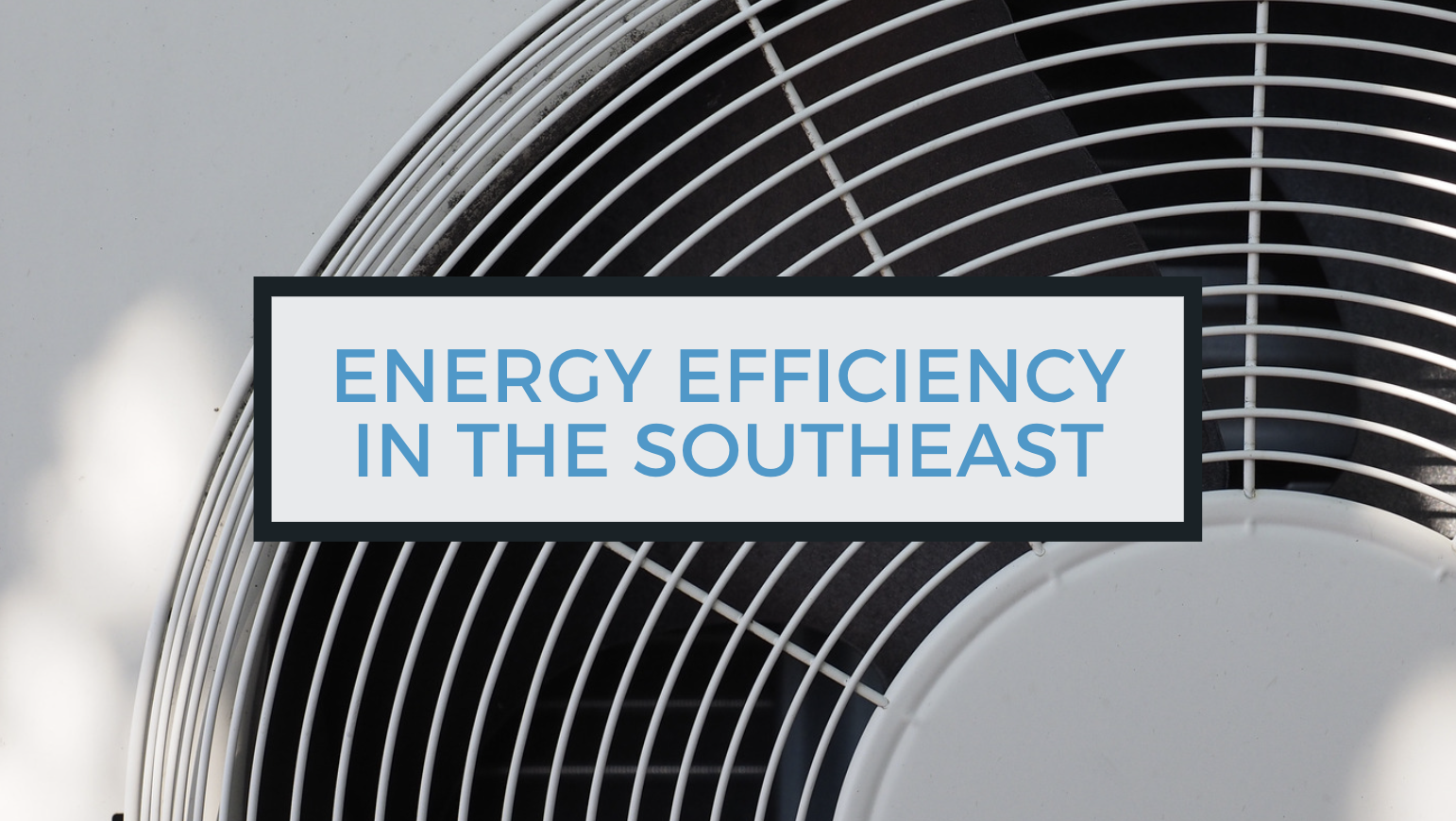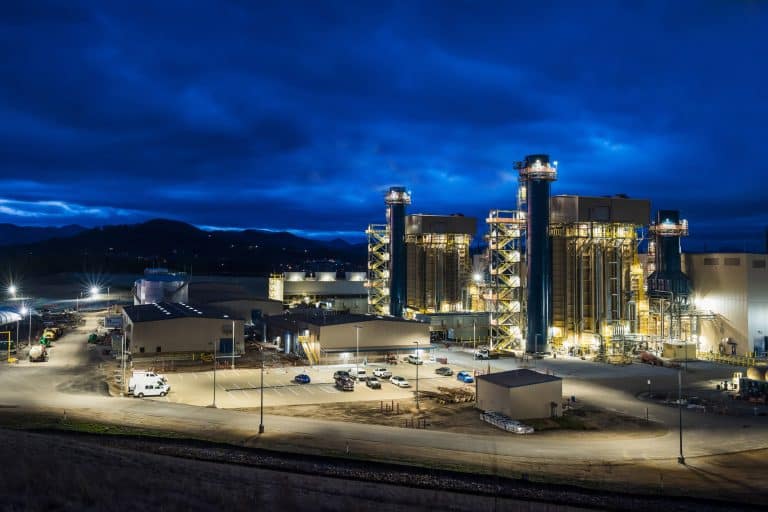Each year SACE compiles efficiency performance data from nearly 500 electric utilities in the Southeast, which we now present in our fourth annual “Energy Efficiency in the Southeast” report.
Our latest report centers on utility efficiency savings from 2020 (the most recent year with complete data) taken as a percent of annual electric retail sales – which creates a standard metric to compare performance between utilities and states of different sizes. Our data findings are presented with both historical context and the most recent policy trends to give a sense of where efficiency savings performance will likely go in the coming years. Our first blog in this series coincided with the release of the fourth annual “Energy Efficiency in the Southeast” report.
[button color=”blue” url=”https://cleanenergy.org/wp-content/uploads/Energy-Efficiency-in-the-Southeast-Fourth-Annual-Report.pdf”]Download the Report[/button]
[button color=”blue” url=”https://cleanenergy.org/news-and-resources/energy-efficiency-in-the-southeast-fourth-annual-report-webinar/”]Watch the report webinar[/button]
[button color=”blue” url=”https://cleanenergy.org/?s=SEEnergyEfficiencyReport2022″]Read the report blog series[/button]
Every major utility system in the Southeast has announced a commitment to reduce carbon emissions. But the long-range resource plans our region’s utilities have filed with regulators don’t live up to their promises. Energy efficiency is the least cost, most abundant tool for reducing carbon emissions. But Southeastern utilities as a whole have failed to pursue the enormous potential for reducing energy waste – which can be easily seen with a comparison to the energy performance of other regions.
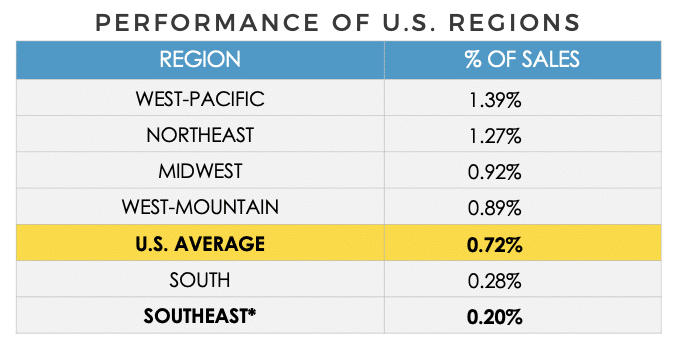
Eliminating energy waste makes it easier to retire outdated fossil fuel power plants and avoid the need for new ones. More energy efficiency deployment can also help utilities increase grid reliability as they integrate large quantities of renewable energy. And by making electricity more affordable for families who struggle with high energy bills, energy efficiency is also the key to equity as we transition to a clean energy future.
In 2020, efficiency eliminated an estimated 26,666-gigawatt-hours (GWh) of energy waste across the nation. While the Southeast made only a small contribution to the national savings total, its 1,597 GWh of efficiency savings was still enough to meet the electric power needs of over 120,000 homes while reducing 600,000 tons of carbon emissions.
To close the gap with other regions, policymakers and regulators in the Southeast must create the conditions for efficiency to grow.
Without Supportive Policies, Utilities Won’t Reach for Higher Efficiency Savings
Research has consistently shown that the highest performing utilities on energy efficiency are those with Energy Efficiency Resource Standards (EERS), which prescribe minimum annual savings levels. None of the states in our Energy Efficiency in the Southeast Annual Report have a traditional EERS policy in place. North Carolina comes the closest with its Renewable Energy and Energy Efficiency Portfolio Standard, which does not include specifically prescribed energy savings levels, but does allow up to 40% of its targets to be met with energy efficiency. This has helped to drive efficiency savings at Duke Energy.
Allowing utilities to earn a financial incentive for their energy savings performance is another policy that supports energy efficiency growth. Ideally, such policies include reaching goals that increase utility compensation for achieving high levels of efficiency savings, rather than merely paying out for whatever level of savings the utility happens to achieve. Without incentives to do otherwise, utilities are by default financially incentivized to increase electricity sales and build new power plants. Only three states in our region – North Carolina, South Carolina, and Georgia – have Commission-established utility performance incentive policies in place, and of those three, only North Carolina includes a bonus incentive (an extra $500,000 for achieving 1% annual savings). Notably, these three states consistently have the highest efficiency performance in the Southeast.

Mississippi’s relatively new integrated resource planning (IRP) rules also allow utilities to propose their own performance incentive compensation, and in 2008 the Florida Legislature authorized the establishment of performance incentive payments – though neither the utilities nor the Florida Public Service Commission ever followed through on the new law. As we can see in Florida, without a mechanism to compensate utilities for efficiency performance, they tend to do as little as they can get away with.
Proper Evaluation of Cost and Benefits is Essential
Policies directing utilities to use proper cost-effectiveness evaluation for energy efficiency are also essential. The Tennessee Valley Authority and the state of Florida continue to use particularly out-of-date and inappropriate cost screening practices to block, rather than grow, utility energy efficiency investments. As a result, they have among the worst efficiency performance among major electric utilities.
Florida is the only state in the country that relies on the antiquated ‘RIM’ test to set efficiency savings goals, and it is the only state to automatically remove all efficiency measures with a payback of fewer than two years. Both of these practices are out of step with the rest of the country and result in the elimination of many of the most effective and most common efficiency measures. But for the first time in 30 years, Florida is now revising its energy efficiency rules. If the state abandons these outdated practices, it would almost certainly lead to a jump in efficiency savings.
Meanwhile, the Commissions in North and South Carolina recently approved a change to cost-effectiveness practices for Duke Energy, that will more fairly account for the actual costs paid by the utility versus the associated benefits to the utility system – a move that is expected to increase investment in efficiency.
In 2018, TVA eliminated all of its energy efficiency rebate programs, and its 2019 integrated resource plan used blatantly flawed assumptions about customer adoption of efficiency measures to eliminate efficiency as a selectable resource. But under pressure from Congress, TVA has now said it will revise its efficiency screening practices for its next integrated resource planning process starting later this year.
Alabama has the worst efficiency performance in the Southeast and has none of the policies discussed above in place. Nor does the Alabama Public Service Commission require energy efficiency to be included in utility resource planning.
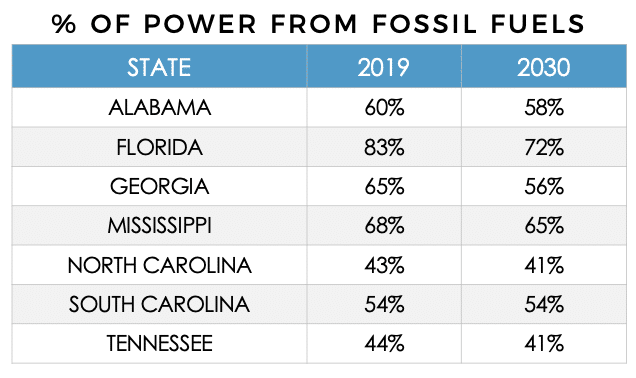
States & Utilities in the Southeast NEED Energy Efficiency to Meet Decarbonization Goals
Without robust investment in energy efficiency, states and utilities in the Southeast will struggle to achieve their public commitments to cut carbon emissions. Without policies to support the growth of utility energy efficiency programs, the transition to a clean energy future will be more expensive overall and create an even greater burden for families who already struggle to afford their high energy bills.
Among the states included in our Energy Efficiency in the Southeast Annual Report, North Carolina has the best policy foundation – both to support the growth of energy efficiency and proactively eliminate carbon from the electric grid. North Carolina was also the first state in the Southeast to formally commit to decarbonization and work is now underway to translate that vision into a concrete plan to cut emissions 70% by 2030 on the way to net-zero by 2050.
While not driven by carbon reduction goals, South Carolina also has policies supportive of energy efficiency and its Public Service Commission has begun holding the utilities it regulates to a higher standard on integrated resource planning, with a particular focus on asking utilities to do more with energy efficiency.
Georgia Power is currently in an integrated resource planning proceeding and has proposed eliminating the remainder of its coal generation fleet. But the utility has frozen its planned efficiency savings while proposing a substantial increase in fossil gas generation.
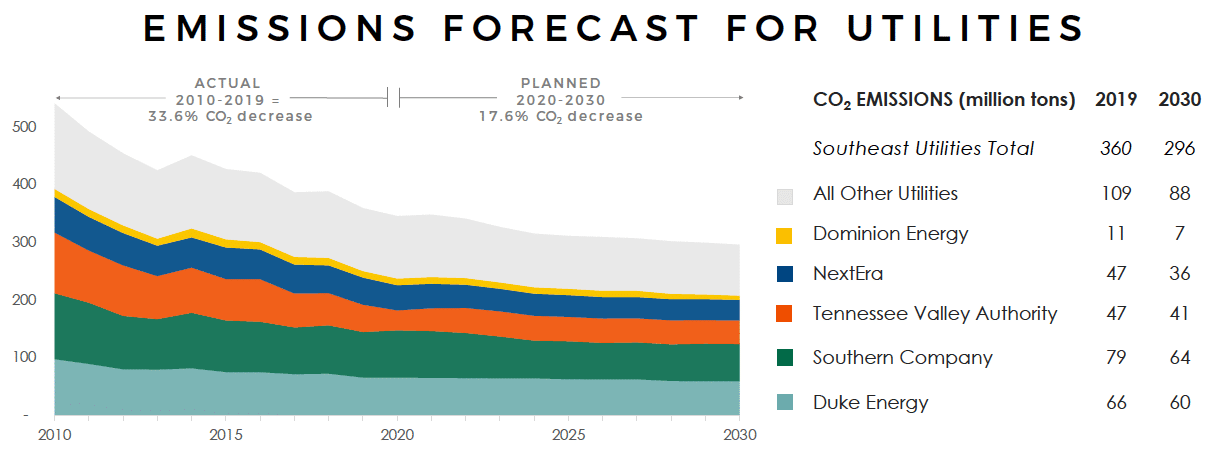
Eliminating energy waste is the most direct way to reduce carbon emissions. But utilities aren’t going to do it at scale unless regulators build strong policy foundations to grow energy efficiency in the Southeast. Despite visible progress in reducing carbon emissions since 2010, the Southeast has a long way still to go to kick the fossil fuel habit. Even as they retire coal and older fossil gas power plants, many utilities continue to aggressively pursue new natural gas generation while resisting clean energy alternatives. Regulators in the Southeast don’t have to reinvent the wheel to increase energy efficiency, but can instead follow a proven policy roadmap for increasing energy efficiency. While the climate clock is ticking away, inaction on efficiency policy is currently costing the Southeast billions of dollars in wasted energy. Surely that’s reason enough to act, right?
[button color=”blue” url=”https://cleanenergy.org/wp-content/uploads/Energy-Efficiency-in-the-Southeast-Fourth-Annual-Report.pdf”]Download the Report[/button]
[button color=”blue” url=”https://cleanenergy.org/news-and-resources/energy-efficiency-in-the-southeast-fourth-annual-report-webinar/”]Watch the report webinar[/button]
[button color=”blue” url=”https://cleanenergy.org/?s=SEEnergyEfficiencyReport2022″]Read the report blog series[/button]
#SEEnergyEfficiencyReport2022








